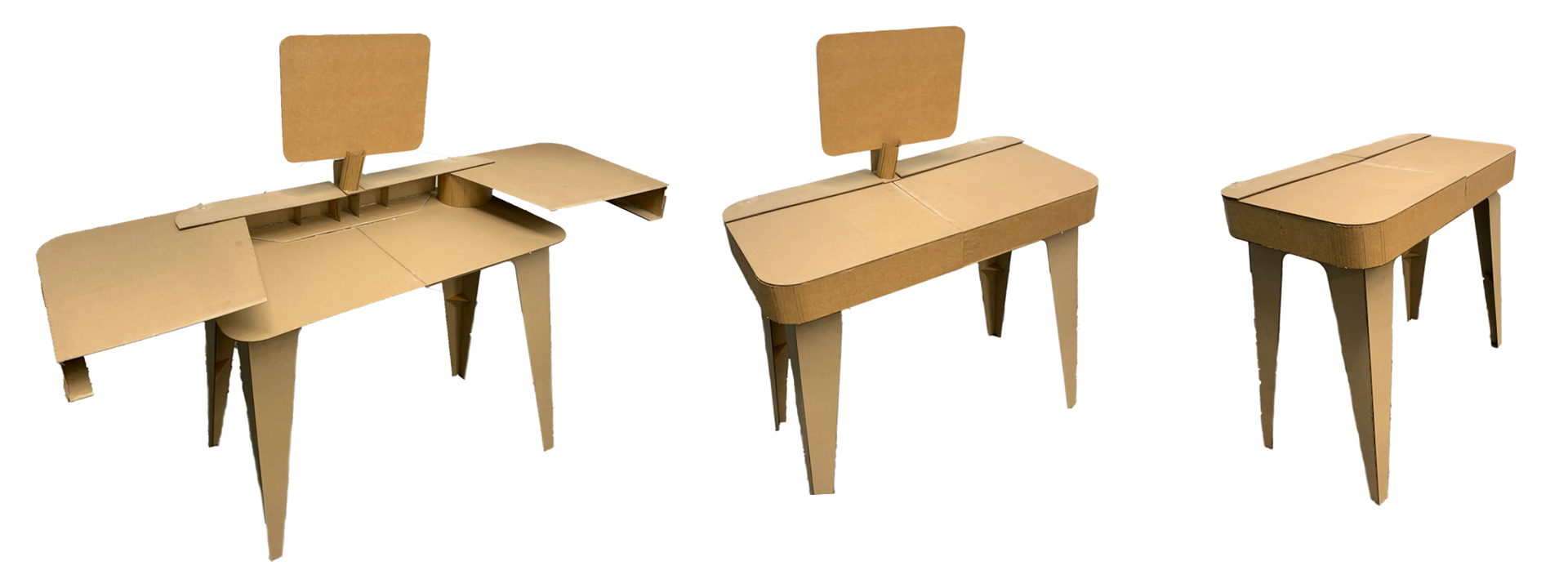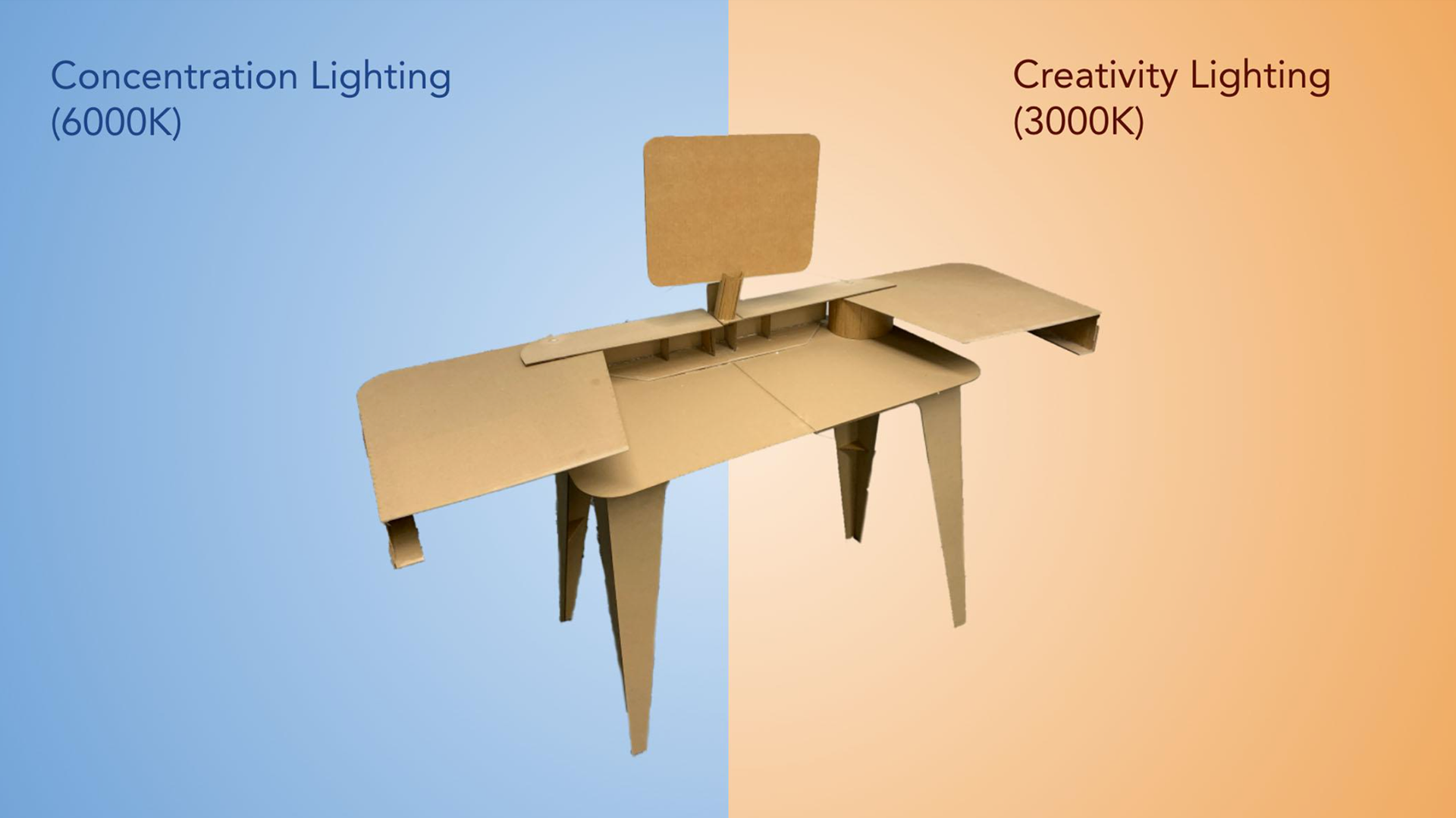Balance Desk
a transforming work-life balance desk (2022)
Balance Desk is a transforming desk with different modes for work, play, and relaxation. In my Experience Design 1 class, the semester theme was "washing." Students were tasked with selecting any topic within the washing category and identifying an existing problem through human-centered interviews. My team focused on the concept of symbolic washing, such as clearing your mind or resetting for the day.
Process
The first part of the process was creating the interview protocol and response stimuli. It was important to create a comfortable environment and avoid leading questions. We came up with a "floor plan furnishing game" to learn about the participants' routines and priorities in their personal space.
We also thought this would be a fun way to engage the interviewees and encourage natural conversation. Similarly, we used a "ranking stressors" activity to further understand the context behind their answers.
furnishing game set up and stressors
After completing the interviews, we synthesized the results using the online whiteboard Miro. Through this process, we identified connecting themes among the responses to accurately define the overarching problem. We categorized each response and determined must-have constraints.
Once we organized the responses, we came up with a "how might we" question to guide our next steps: "How might we provide physical tools to help students separate stressors from their lives?". After sketching responses, we chose a transforming desk idea and defined requirements.
my envisioning experience sketch
Engineering Requirements:
1. Needs to function as a desk in each state
2. Needs to transition between states smoothly
3. Needs to have a collapsible monitor stand
Design Requirements:
1. Each state needs to feel intentional and distinct
2. The user should be able to return to their work
3. The closing action should feel quick and intuitive
Outcome
The outcome of our iterative process was a full-size, functional desk prototype with 3 distinct states—work, rest, and hidden. In the work state, the top level of the desk rotates outwards and provides the user with an additional 65% of space. In the rest state, the user can cover their work by rotating the top level inwards while still having access to the monitor.
Finally, in the hidden state, the monitor can be fully stored inside the desk to remove distractions or reminders of work. An additional detail we researched was the effect of lighting tone on productivity and rest. We found that cool-toned lighting promotes concentration, while warm-toned lighting promotes creativity. Therefore, we added lights to the concept.






